Oldoinyo Lengai
Oldoinyo Lengai
Oldoinyo Lengai, also known as “The Mountain of God” in the Maasai language, is an active volcano located in northern Tanzania. It is part of the East African Rift Valley and is renowned for its unique geological and cultural significance. Oldoinyo Lengai is the only known active volcano that produces natrocarbonatite lava, a rare type of lava that is highly alkaline and has unique physical properties. The mountain holds a special place in Maasai culture and attracts geologists, volcanologists, and adventurous travelers from around the world.
Key Features of Oldoinyo Lengai
1. Location and Geography:
Oldoinyo Lengai is situated in northern Tanzania, approximately 120 kilometers (75 miles) northwest of Arusha and near the southern shore of Lake Natron. It is part of the East African Rift Valley, a geologically active region characterized by rift valleys, volcanoes, and fault lines.
The volcano stands at an elevation of about 2,962 meters (9,718 feet) above sea level, making it a prominent feature in the landscape of the Great Rift Valley. Its symmetrical cone shape rises dramatically from the surrounding plains.
2. Unique Volcanic Activity:
Oldoinyo Lengai is one of the most unique volcanoes in the world due to its production of natrocarbonatite lava. Unlike typical basaltic lava, natrocarbonatite lava is rich in sodium, potassium, and calcium carbonate minerals. This type of lava has a lower melting point, allowing it to remain molten at cooler temperatures (around 500-600°C or 932-1112°F) compared to basaltic lava.
The natrocarbonatite lava is highly fluid and flows quickly, resembling the consistency of oil. When it erupts, the lava is initially black and turns white or gray as it cools and reacts with moisture in the air. This reaction produces white, soda-like deposits that give the summit and surrounding areas a unique, white appearance.
3. Geological Significance:
Oldoinyo Lengai’s natrocarbonatite lava is a rare geological phenomenon, making it an important site for scientific study. The volcano offers insights into the processes and conditions that lead to the formation of carbonatite magmas, which are rare on Earth’s surface.
The presence of carbonatite lava at Oldoinyo Lengai provides valuable information about the geochemical evolution of the Earth’s mantle and the role of carbon dioxide in volcanic processes.
4. Eruptions and Activity:
Oldoinyo Lengai has experienced numerous eruptions throughout its history, with significant eruptions recorded in the 20th and 21st centuries. The volcano’s activity is characterized by intermittent explosive eruptions, producing ash and lava fountains, as well as effusive eruptions, where lava flows gently from the summit.
Notable eruptions occurred in 1966-67, 1983, and more recently in 2007-2008, when the volcano produced significant ash clouds and lava flows that impacted the surrounding areas.
5. Cultural Significance:
Oldoinyo Lengai holds deep cultural and spiritual significance for the Maasai people, who consider the mountain to be sacred. They believe it to be the home of Engai (or Enkai), the Maasai god, and view its eruptions as manifestations of divine communication.
The Maasai use the mountain’s unique white ash for ceremonial purposes, and the mountain features prominently in their mythology and religious practices.
6. Flora and Fauna:
The slopes of Oldoinyo Lengai and the surrounding areas are home to diverse flora and fauna adapted to the arid and volcanic environment. Vegetation includes grasses, acacias, and other drought-resistant plants, which provide habitat for wildlife such as zebras, giraffes, and antelope.
The nearby Lake Natron, a saline and alkaline lake, supports a significant population of lesser flamingos, which feed on the algae in the lake. The lake and its surroundings are also important breeding grounds for these flamingos.
7. Tourism and Adventure:
Oldoinyo Lengai attracts adventurous travelers, geologists, and volcanologists who are fascinated by its unique volcanic activity and stunning landscapes. The mountain offers challenging hiking and climbing opportunities, with the ascent typically taking about 5-7 hours.
The climb to the summit is steep and demanding, requiring physical fitness and proper preparation. The reward for reaching the summit includes breathtaking views of the Rift Valley, Lake Natron, and the surrounding plains, as well as the opportunity to witness the active crater and its unique lava.
8. Conservation and Management:
Oldoinyo Lengai is part of the Ngorongoro Conservation Area, a UNESCO World Heritage Site that includes the Ngorongoro Crater, Olduvai Gorge, and other important ecological and cultural sites. The conservation area is managed by the Ngorongoro Conservation Area Authority (NCAA), which aims to balance wildlife conservation, tourism, and the rights of indigenous communities.
Conservation efforts focus on protecting the natural environment, preserving the cultural heritage of the Maasai, and promoting sustainable tourism practices.
Conclusion:
Oldoinyo Lengai is a geological and cultural marvel, offering a unique combination of natural beauty, scientific intrigue, and spiritual significance. Its rare natrocarbonatite lava, striking landscapes, and role in Maasai culture make it a fascinating destination for travelers and researchers alike. Whether climbing its slopes, studying its volcanic processes, or experiencing the spirituality of the mountain, Oldoinyo Lengai provides a remarkable and memorable experience in the heart of the Great Rift Valley

